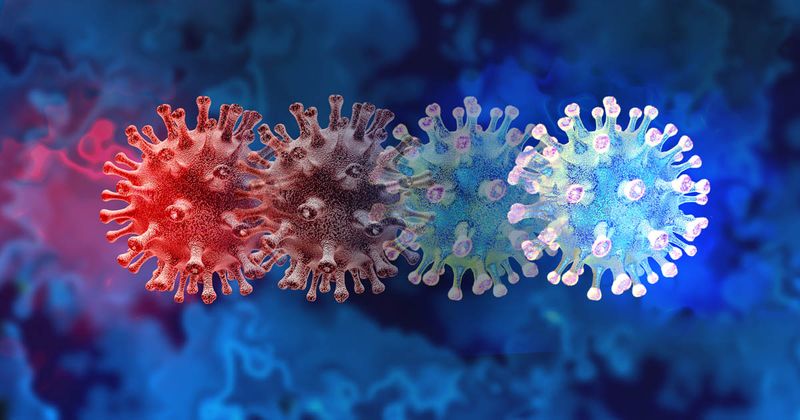What the CDC report says about the first omicron cases in the US
In a recent MMWR report, members of the CDC’s COVID-19 Response Team provided details on the first 43 confirmed infections in the United States caused by the omicron variant of SARS-CoV-2.
According to the report, 79% of the patients infected with the variant were fully vaccinated — 20 had completed a two-dose primary series and 14 had received a booster dose. There were eight unvaccinated patients and one whose status was unknown.

Only one of the 43 patients was hospitalized — for 2 days — and there were no reported deaths.

“These early reports are reassuring as there was not much, if any, severe disease,” Amesh A. Adalja, MD, a senior scholar at the Johns Hopkins Center for Health Security, told Healio. “What will be important to see is how this evolves as larger quantities of persons are infected, including high-risk individuals and those who are not vaccinated.”
According to the report, 58% of patients were aged 18 to 39 years, 23% were aged 40 to 64 years, 9% were aged 65 years or older, and four patients were aged younger than age 18 years.
Around one-third of patients reported international travel within the last 14 days prior to testing positive for COVID-19 and six reported a previous SARS-CoV-2 infection. The earliest day of symptom onset among the patients was Nov. 15 — 9 days before the variant was first reported to WHO — in a person with no history of travel.
Among all cases, just 3 people were asymptomatic. The other 40 patients reported cough (89%), fatigue (65%), congestion (59%) and fever (38%) as common symptoms.
“Many of the first reported cases of omicron variant infection appear to be mild, although as with all variants, a lag exists between infection and more severe outcomes, and symptoms would be expected to be milder in vaccinated persons and those with previous SARS-CoV-2 infection than in unvaccinated persons,” the authors wrote.
However, “a highly transmissible variant could result in enough cases to overwhelm health systems,” they wrote.

We asked Infectious Disease News Editorial Board Member Jeanne M. Marrazzo, MD, MPH, director of the division of infectious diseases at the University of Alabama at Birmingham, to further clarify what the report does and does not tell us about the emerging variant.
Healio: What does the report tell us about the omicron variant?
Marrazzo: The CDC report tells us that in this relatively small number of cases in a relatively young group of people, prior immunization did not prevent infection in nearly 80% — several of whom had received boosters.
The symptoms look like the usual for viral upper respiratory tract infections, including cough, fatigue, and congestion; fever occurred in nearly half; and one person was hospitalized for two days. All this indicates that in this highly vaccinated group, the infection wasn’t apparently severe.
Healio: What does the report not tell us?
Marrazzo: We still don’t know how omicron will play out when it spreads through a population with lower vaccination coverage, high rates of co-morbid conditions, and variable rates of prior infection, or whether older individuals, despite their higher vaccine coverage rates, will be more susceptible to more severe effects.

